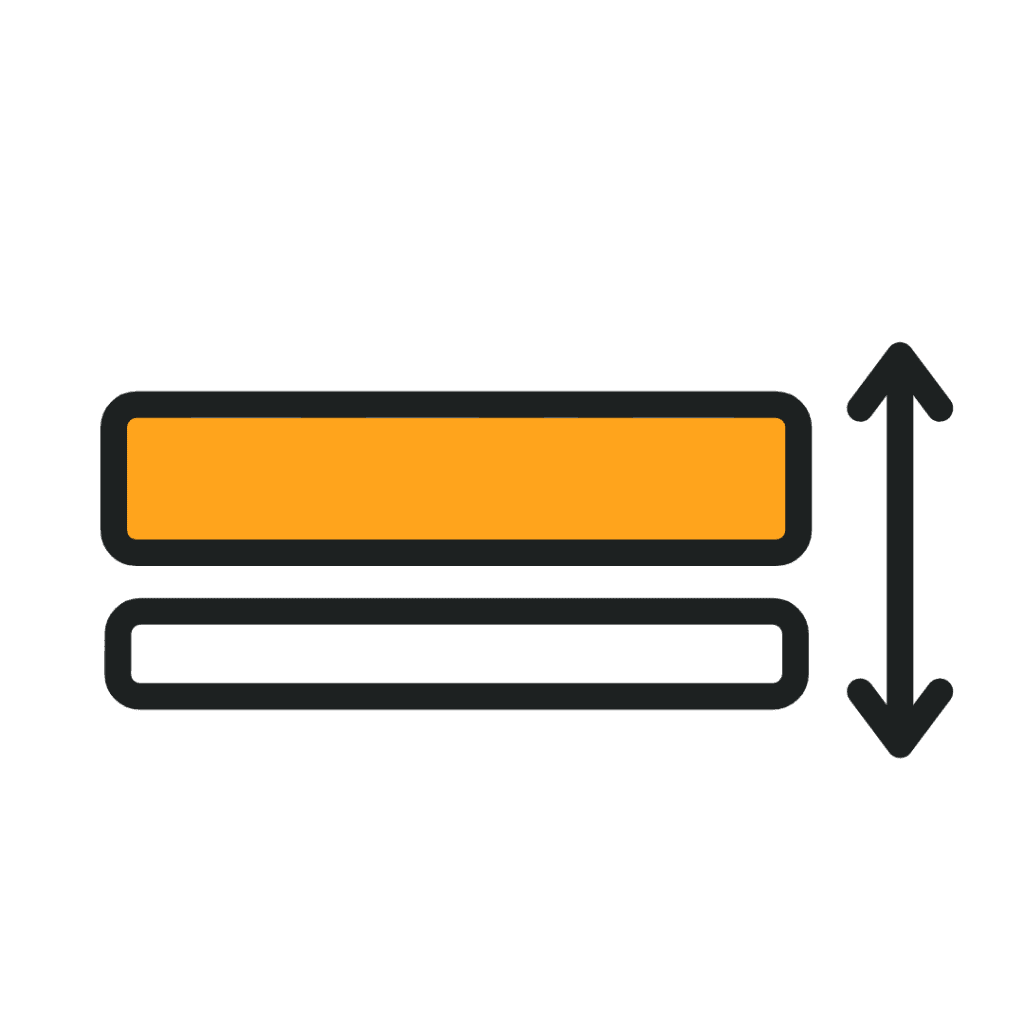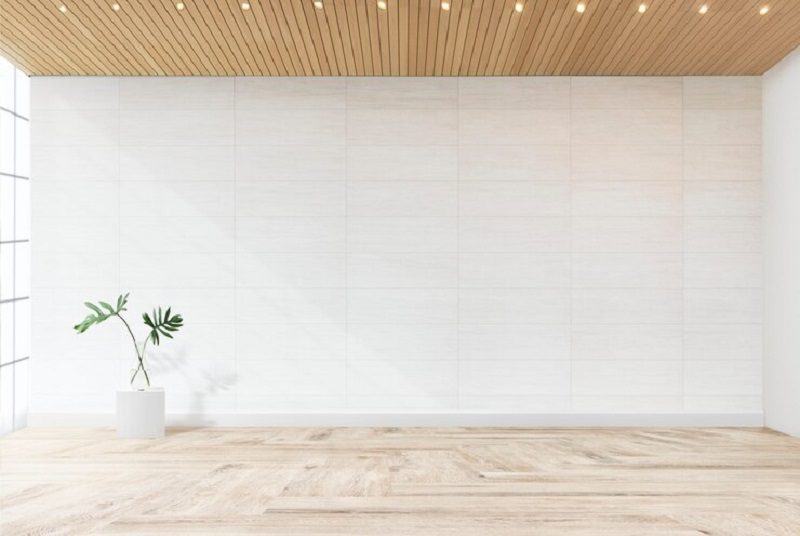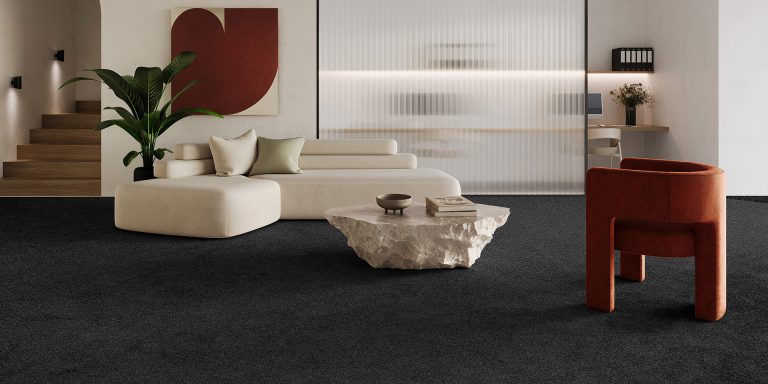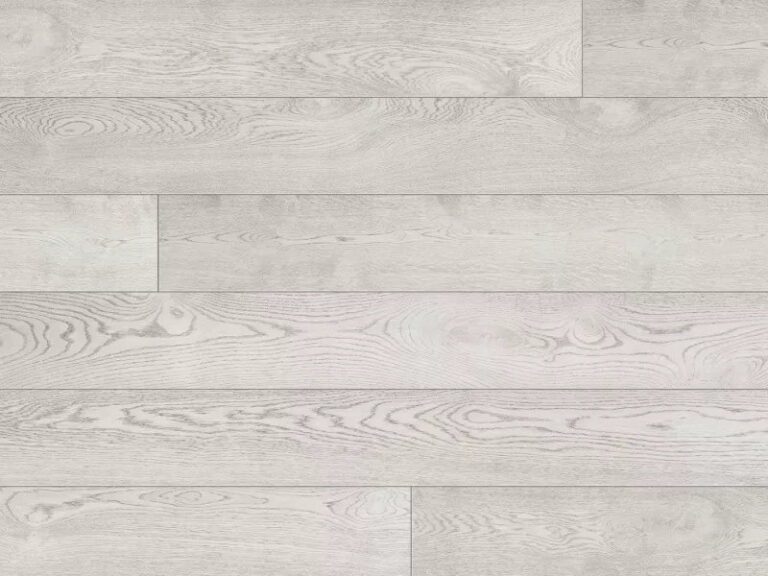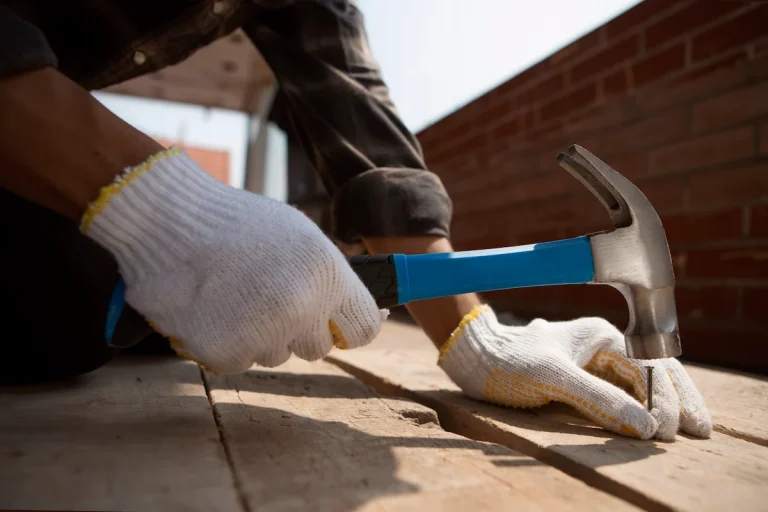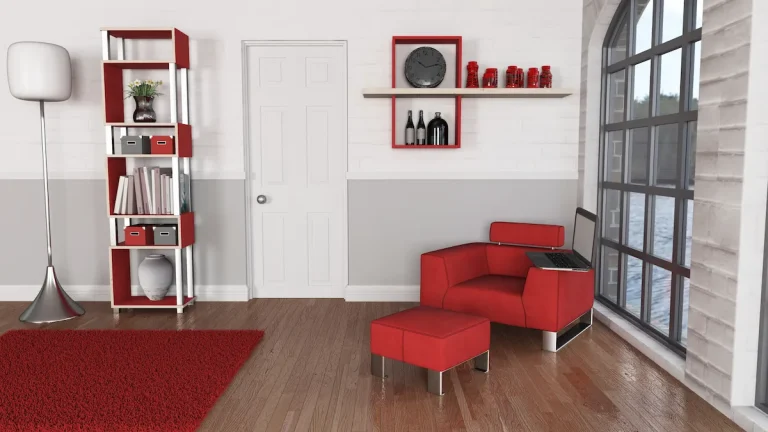Considering upgrading your flooring to fake wood flooring but unsure which option to choose among engineered wood, laminate, and LVT flooring?
We explore the characteristics and differences of each type of flooring, including appearance, durability, installation process, maintenance, and cost.
Discover which option closely resembles solid wood and which flooring is considered the best choice for aesthetics, longevity, ease of installation, and budget-friendly options. Let’s find the perfect flooring option for your space!
Fake Wood Flooring Recommendation
Which flooring looks most like hardwood? There are several types of fake wood flooring that you can choose from and match with your home concept, including engineered wood, laminate, and LVT flooring. Here are the explanations for each type.
1. Engineered Wood Flooring
One of the artificial wood flooring types is engineered wood flooring. It is designed to mimic the look of solid hardwood flooring. It is made by layering real wood veneer over plywood or high-density fibreboard (HDF) to create a durable and aesthetically pleasing alternative to traditional hardwood.
One of the key advantages of engineered wood flooring is its resistance to moisture and temperature fluctuations, making it a perfect choice for areas prone to high humidity levels or temperature changes.
Engineered wood flooring is often easier to install than solid wood flooring, as it can be floated, glued, or nailed down depending on the subfloor type, providing greater versatility in its application.
This type of flooring is also environmentally friendly as it utilises a smaller amount of natural wood compared to solid wood flooring, making it a sustainable option for eco-conscious consumers. Read more about diverse types of engineered wood flooring.

See product: Ted Todd Classic Tones Kielder – Herringbone (500mm x 100mm)
2. Laminate Flooring
Laminate flooring is another type of imitation wood flooring that reproduces the appearance of hardwood through high-resolution images printed on multiple layers of synthetic materials. It offers a cost-effective and versatile alternative to solid wood flooring.
One of the key features of laminate flooring is its simple installation process. Most laminate planks come with a click-lock system, allowing for easy assembly without the need for adhesive. This makes it a popular choice for DIY enthusiasts looking to renovate their floors without professional assistance. In terms of structure, laminate flooring typically comprises a moisture-resistant layer, a high-density fibreboard core, and a durable wear layer on top, providing durability and resistance to marks, scratches, and fading.

See product: Elka 8mm V-Groove Country Oak
3. LVT Flooring
Luxury Vinyl Tile (LVT) flooring is a type of artificial wood flooring that closely resembles the look and texture of real hardwood. It is constructed from multiple layers of PVC vinyl and offers exceptional durability and water resistance.
One standout feature of LVT flooring is its versatility. It can be installed in any room, including moisture-prone areas like bathrooms and kitchens. LVT flooring is incredibly easy to maintain, requiring only regular sweeping and occasional mopping for cleaning.
Another benefit of LVT flooring is its ability to resist scratches, dents, and stains, making it ideal for high-traffic areas in homes or commercial spaces. The installation process for LVT flooring is relatively simple, with options for glue-down, loose lay, or click-lock systems.

See product: Karndean Art Select Oak Royale Storm Oak
How Are These Flooring Options Made?
Engineered wood flooring, laminate flooring, and LVT flooring are all types of best flooring that look like wood, each produced using different methods and materials to achieve the desired wood-like appearance and characteristics.
1. Engineered Wood Flooring
Engineered wood flooring is crafted by layering a real wood veneer over plywood or HDF, providing dimensional stability and resistance to moisture.
This construction method enhances the flooring’s durability, making it an ideal choice for high-traffic areas in residential and commercial spaces. One of the key benefits of engineered wood flooring is its eco-friendly nature, as it uses less natural wood compared to traditional solid wood flooring, reducing environmental impact. Engineered wood flooring offers a variety of design options, including different wood species, finishes, and plank sizes, allowing homeowners to customise their floors to suit their unique style preferences.
2. Laminate Flooring
Laminate flooring is created by fusing multiple layers of synthetic materials together under high heat and pressure, resulting in a durable and economical flooring option that closely resembles the look of hardwood. The top layer features a high-definition image of wood grain, providing a realistic finish.
One of the main advantages of using this type of flooring is its resistance to scratches, stains, and fading, making it a popular choice for high-traffic areas in homes and commercial spaces. The manufacturing process involves bonding these layers, including the image layer, to a dense core board, ensuring stability and durability. The design versatility of laminate flooring allows for a wide range of styles, from traditional oak to modern grey tones, catering to various design preferences.
The fusion of technology and craftsmanship in the production of fake wood flooring results in a product that is not only aesthetically pleasing but also easy to maintain. The surface layer is typically coated with a protective finish, making it resistant to spills and easy to clean, perfect for busy households. In terms of installation, laminate flooring is usually designed to be installed as a floating floor, which means it can be laid over existing substrates like concrete or old vinyl, saving time and labour costs.
3. LVT Flooring
Luxury Vinyl Tile flooring is manufactured using PVC vinyl layers that are compressed and embossed to replicate the natural texture and appearance of hardwood. This process creates a resilient and waterproof flooring solution that is suitable for high-moisture areas.
One of the key advantages of LVT flooring is its durability, making it an excellent choice for busy households or commercial spaces. The technology behind LVT flooring allows for a wide range of design options, including imitation wood flooring, stone, and tile patterns, providing versatility in style. The installation process of LVT flooring is relatively straightforward, with options for glue-down, click-lock, or loose-lay methods, making it a popular choice for DIY enthusiasts as well as professionals.
The Differences Between Each Fake Wood Flooring Options
When comparing engineered wood flooring, laminate flooring, and LVT flooring, key differences emerge in terms of materials used, installation methods, durability, and overall appearance.
1. Appearance and Texture
The appearance and texture of engineered wood flooring, laminate flooring, and LVT flooring vary significantly, with engineered wood closely resembling the natural grain and texture of hardwood, while laminate and LVT replicate the look through high-definition printing and embossing techniques.
Engineered wood flooring, which is constructed by layering real wood veneers over a plywood base, offers not only the visual appeal but also the feel of authentic hardwood. The texture of engineered wood provides a sense of depth and warmth that is akin to traditional hardwood, making it a popular choice among homeowners seeking a balance between elegance and durability.
Laminate flooring, on the other hand, utilises high-resolution images of hardwood grains that are then printed onto the surface layer, creating a remarkably realistic appearance. The embossing process further enhances the texture by mimicking the natural contours and knots found in hardwood, adding a tactile dimension that enhances the overall hardwood-like feel.
LVT, also known as luxury vinyl tile, achieves its hardwood resemblance through advanced printing technology that captures every intricate detail of wood patterns. This process, combined with embossing techniques, results in a flooring option that not only looks like hardwood at first glance but also feels surprisingly similar to the touch, offering a practical and cost-effective alternative.
2. Durability and Lifespan
In terms of durability and lifespan, engineered wood flooring offers a balance of natural aesthetics and resilience against moisture and wear, while laminate flooring excels in scratch resistance and LVT flooring stands out for its waterproof properties and low maintenance requirements.
Engineered wood, being a product made from layers of wood topped with a real hardwood veneer, provides a timeless look that can withstand fluctuations in humidity. On the other hand, laminate flooring, constructed with a high-resolution image layer sandwiched between a wood-chip composite, is highly resistant to scratches and fading.
LVT flooring, composed of multiple layers including a core backing and a protective wear layer, is designed to be completely impervious to water damage, making it an ideal choice for areas prone to spills and moisture. Each type of flooring material brings its own unique blend of durability and maintenance considerations, catering to different needs and preferences.
3. Installation Process
In terms of the installation process, engineered wood flooring typically requires professional installation due to its intricate layering and construction, while laminate flooring offers a DIY-friendly click-and-lock system, and LVT flooring can be installed as a floating floor or glued down for added stability.
Engineered wood flooring, with its multiple layers and specific installation requirements, often demands skilled labour for proper fitting and alignment. In contrast, laminate flooring’s interlocking design makes it a favoured choice for those seeking easy installation without the need for advanced tools or expertise.
If you are considering a DIY project, LVT flooring emerges as the best option as it provides flexibility in installation methods. Whether you opt for the floating floor method that simply clicks together or choose to apply adhesive for a more secure finish, LVT offers versatility and simplicity for at-home installation.
4. Maintenance and Care
In terms of maintenance and care, engineered wood flooring requires periodic refinishing to maintain its appearance, while laminate flooring and LVT flooring are easier to clean and maintain, making them ideal choices for busy households seeking low-maintenance flooring solutions.
Engineered wood flooring, being a blend of real wood and other materials, needs a protective finish to safeguard its surface from scratches and stains. On the other hand, laminate flooring, composed of multiple layers, is highly resilient to scratches and dents due to its tough top wear layer, making it suitable for high-traffic areas.
What hard flooring is the best? LVT flooring stands out due to its waterproof properties, making it an excellent choice for bathrooms and kitchens where moisture is a concern. Regular sweeping, occasional mopping and prompt cleaning of spills can help maintain the longevity and appearance of all three types of hard flooring.
5. Cost
In terms of cost, engineered wood flooring is generally more expensive upfront but adds value to a home, while laminate flooring offers a budget-friendly option with a wide range of styles, and LVT flooring provides a cost-effective alternative that combines durability and aesthetics.
Though the initial investment for engineered wood may be higher, its durability and beauty make it a worthwhile choice for homeowners looking for a long-term investment in their property. On the other hand, laminate flooring, while more affordable upfront, may require replacement sooner than engineered wood, impacting its long-term value.
Comparing the three options, LVT flooring stands out as a middle ground, offering a balance between cost and quality, making it a popular choice for those seeking a blend of affordability and durability.
When considering both upfront cost and long-term value, homeowners should weigh the benefits of each type of flooring to make the best decision for their home and budget.
What Flooring Looks Most Like Hardwood?
Among engineered wood flooring, laminate flooring, and LVT flooring, engineered wood closely resembles solid hardwood in its appearance and texture, making it the top choice for those seeking a genuine wood look without the high maintenance requirements.

See product: Ted Todd Warehouse Sugar Cane – Wide Plank (1.9m x 190mm)
Engineered wood flooring is admired for its ability to mimic the rich tones and natural grains found in solid hardwood. The top layer of real hardwood gives it an authentic look, adding warmth and sophistication to any space. Engineered wood is more resistant to moisture and temperature fluctuations compared to traditional hardwood flooring.
Laminate flooring, on the other hand, boasts its affordability and easy installation process. Though not as close in resemblance to solid hardwood as engineered wood, it offers a wide range of styles, including oak, maple, and hickory finishes.
The Best Flooring Option
What hard flooring is the best? When determining the best flooring option, factors such as aesthetics, durability, ease of installation, maintenance requirements, and cost must be considered to find the ideal choice that aligns with personal preferences and practical needs.
Engineered wood flooring offers a luxurious, natural look that can add value to a home; however, it may scratch more easily than laminate or LVT.
Laminate provides a budget-friendly option with a variety of designs, but it may not withstand moisture as well as engineered wood or LVT.
LVT offers exceptional durability and resistance to water damage, making it an ideal choice for high-traffic areas, but it may lack the warmth and authenticity of real wood.
Ultimately, the best hard flooring option depends on individual priorities and preferences.
a. For Aesthetics
In terms of aesthetics, engineered wood flooring offers the authentic beauty of real wood, providing a warm and inviting ambience to any space. Laminate flooring and LVT flooring also excel in mimicking natural wood tones and textures, catering to diverse design preferences.
What sets engineered wood apart is its ability to bring the rich, organic feel of hardwood whilst being more resistant to moisture and humidity variations, making it suitable for all areas of the home.
Laminate flooring, on the other hand, stands out for its affordability and durability, ideal for high-traffic spaces like hallways and living rooms.
LVT flooring, known for its versatility, can replicate various materials such as stone or ceramic, offering a wide range of design possibilities. Each type has its unique strengths, making it essential to consider factors like budget, maintenance, and desired aesthetic appearance when deciding which one is the best fit for a particular room.
b. For Durability and Longevity
In terms of durability and longevity, engineered wood flooring offers a balance of natural aesthetics and resilience against moisture and wear, whilst laminate flooring excels in scratch resistance and LVT flooring stands out for its waterproof properties and low maintenance requirements.
Engineered wood flooring is known for its ability to withstand fluctuations in humidity and temperature, making it a durable choice for various climates.
Whereas, laminate flooring is highly resistant to scratches, making it ideal for high-traffic areas.
On the other hand, LVT flooring’s waterproof nature makes it perfect for areas prone to spills and moisture, such as bathrooms and kitchens.
Each type of flooring has its unique strengths and characteristics that cater to different needs and preferences.
c. For Ease of Installation and Maintenance
When considering ease of installation and maintenance, laminate flooring emerges as a user-friendly option with its click-and-lock mechanism, requiring minimal effort for installation. Both laminate and LVT flooring are low-maintenance choices that offer hassle-free upkeep compared to engineered wood flooring.
Laminate flooring is often hailed as the best flooring that looks like wood without the cumbersome installation process associated with traditional wood flooring. The click-and-lock system makes it a breeze for even beginners to lay down the planks in no time.
Similarly, LVT flooring, with its interlocking design, allows for quick and simple installation without the need for glue or nails. This feature makes it perfect for DIY enthusiasts looking to upgrade their space efficiently.
d. For Budget-Friendly Options
In terms of budget-friendly options, laminate flooring stands out as an economical choice that provides a wide range of styles at affordable prices, making it a popular selection for those seeking cost-effective flooring solutions. LVT flooring also offers a cost-effective alternative with its durability and aesthetic appeal.
These two types of flooring are not only budget-friendly but also easy to maintain, reducing long-term costs associated with upkeep. The versatility of laminate and LVT allows for customisation in various designs, mimicking the look of expensive materials like hardwood floors without the hefty price tag.
The installation process of laminate and LVT is relatively simple, saving on labour costs compared to more intricate flooring options. This makes them ideal choices for homeowners looking to enhance their space with a stylish finish while staying within a reasonable budget.
Choosing the right flooring is an investment in your home’s future, and at TEKA Flooring, we’re committed to helping you make the best decision. Visit our showroom today and discover why so many homeowners trust us for their flooring needs.
Transform your home with our exquisite engineered wood, laminate, or LVT flooring and experience the perfect blend of beauty, durability, and value. Let TEKA Flooring be your partner in creating the home of your dreams.
Read also:



















